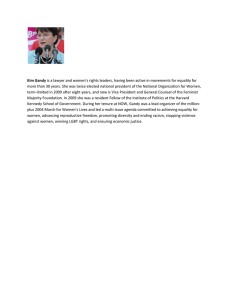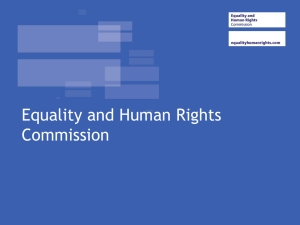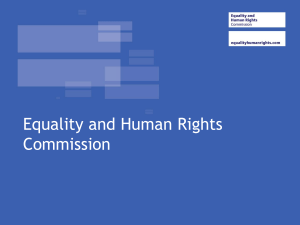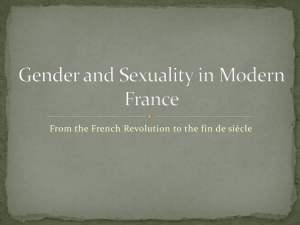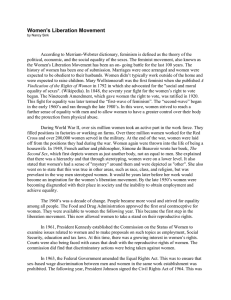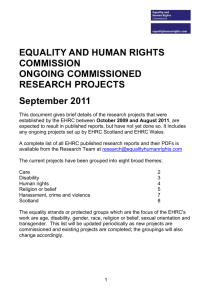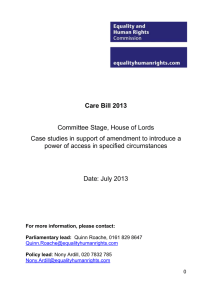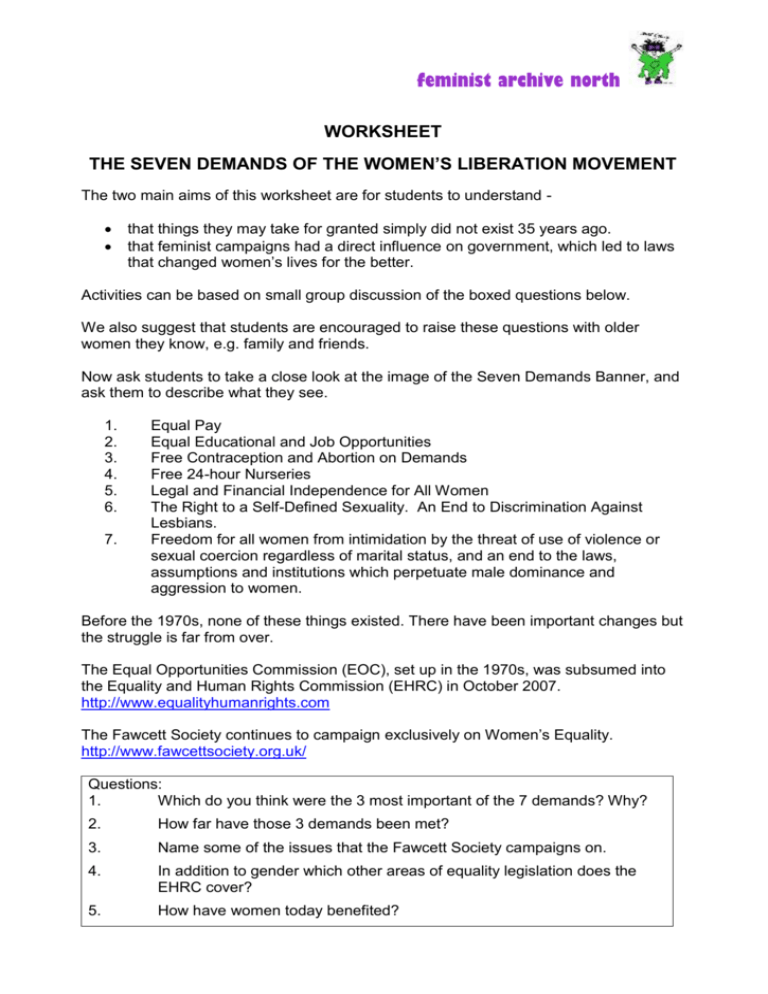
feminist archive north
WORKSHEET
THE SEVEN DEMANDS OF THE WOMEN’S LIBERATION MOVEMENT
The two main aims of this worksheet are for students to understand
that things they may take for granted simply did not exist 35 years ago.
that feminist campaigns had a direct influence on government, which led to laws
that changed women’s lives for the better.
Activities can be based on small group discussion of the boxed questions below.
We also suggest that students are encouraged to raise these questions with older
women they know, e.g. family and friends.
Now ask students to take a close look at the image of the Seven Demands Banner, and
ask them to describe what they see.
1.
2.
3.
4.
5.
6.
7.
Equal Pay
Equal Educational and Job Opportunities
Free Contraception and Abortion on Demands
Free 24-hour Nurseries
Legal and Financial Independence for All Women
The Right to a Self-Defined Sexuality. An End to Discrimination Against
Lesbians.
Freedom for all women from intimidation by the threat of use of violence or
sexual coercion regardless of marital status, and an end to the laws,
assumptions and institutions which perpetuate male dominance and
aggression to women.
Before the 1970s, none of these things existed. There have been important changes but
the struggle is far from over.
The Equal Opportunities Commission (EOC), set up in the 1970s, was subsumed into
the Equality and Human Rights Commission (EHRC) in October 2007.
http://www.equalityhumanrights.com
The Fawcett Society continues to campaign exclusively on Women’s Equality.
http://www.fawcettsociety.org.uk/
Questions:
1.
Which do you think were the 3 most important of the 7 demands? Why?
2.
How far have those 3 demands been met?
3.
Name some of the issues that the Fawcett Society campaigns on.
4.
In addition to gender which other areas of equality legislation does the
EHRC cover?
5.
How have women today benefited?

